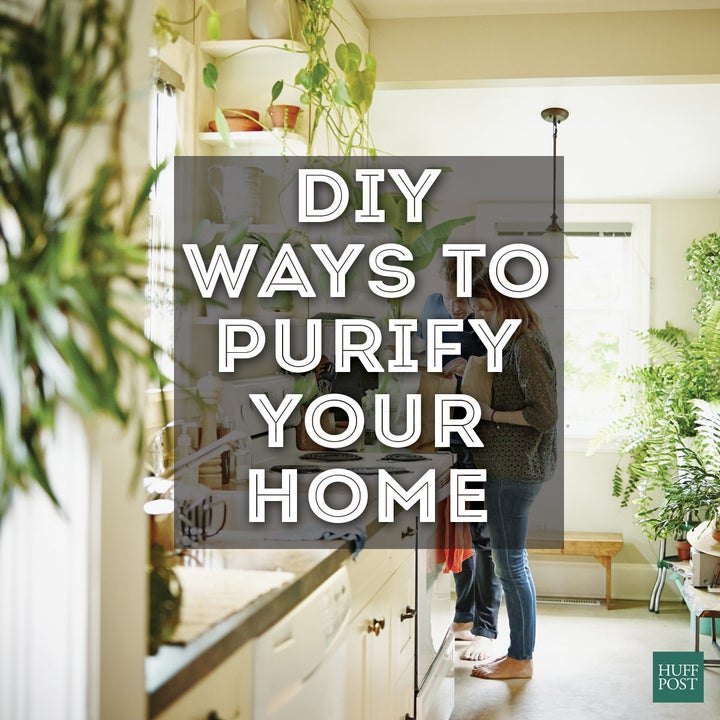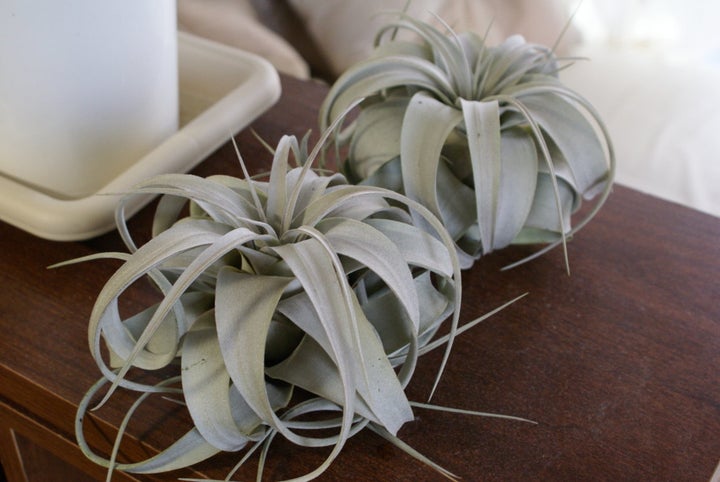
Sure, you think your house is clean... but is it really?
In addition to dusting surfaces and washing your linens, you might want to pay attention to the air quality in your home. LEED-accredited interior designer Sarah Barnard said air quality is an important factor when it comes to personal well-being, noting that volatile organic compounds, or gasses emitted from common household products like carpet and paints, can be "trapped indoors and can be the cause of regular headaches and in some people, dizziness."
The bottomline is that "keeping our indoor air clean is an important part of a healthy lifestyle," Barnard said.
The logical first step would be to get an air purifier. Unfortunately, quality machines can cost upwards of $800. So, to save money -- or help aid your current air purifier -- a few experts shared ways homeowners and renters can DIY their way to better air quality.
"In a best case scenario, different strategies would be combined together for optimum effect," Barnard noted. In other words, using just one of these methods won't cut it, but a couple of them could work in tandem.
Take a look at the tips below and make the right choice for you and your abode!
1. Keep up with routine cleaning.
This might be obvious, but giving a home some cleaning on a routine basis, light or deep, can make a difference. Maxwell Ryan, founder of Apartment Therapy and author of Complete + Happy Home, said people should "wash sheets and blankets once a week," adding that vacuuming is also important -- not just the floors, though. "Include walls, carpet edges, and upholstered furniture," he added.
Ryan also suggests regularly clearing filters in the "air conditioner, heater or furnace, [current] air purifiers, and vacuum."
2. Get rid of your carpet (if you can).
"Wall-to-wall carpeting can also add toxins to your air," said Sarah Ghesquière, senior content writer for Blueair North America. The reason for this, Ghesquiere explained, is that "VOC emissions are at their highest when carpeting is first installed and will continue to be released at low levels for years to come." Carpets also trap gross things like dirt and dust mites.
But, there are solutions. "There are strategies for people who love [carpet] and aren’t willing to give it up, to make it a little better," Barnard said. If you're about to get carpeting installed, choose a plastic lining instead padding. "[Plastic] lined pads are a little bit better because liquid stains and things actually can’t penetrate the pads, so there's nothing growing down in there," Barnard said.
Area rugs can be a cleaner substitute for carpet. Not only can they be aired out, but "they can be sent out for thorough cleanings that clean not just the front of the carpet but the back as well," Barnard noted.
3. Grow some green.
Plants act as great purifiers and if you don't believe that, just ask NASA. Barnard points out that while plants are great, "one little sad houseplant by itself is not going to solve anything." The more plants, the more fresh oxygen is put into your place. "If you actually make an effort to have a couple of plants in every single room, that working together, can really dramatically improve indoor air quality," Barnard said.
If you have a bigger space, especially one with high ceilings, Barnard suggests implementing plants as big as trees to add "a wow moment to the design aesthetic." For those with tinier places, Barnard suggests "tabletop plants" such as tillandsia, which are air plants requiring minimal effort and no soil.

If you have a black thumb, don't worry, there's hope: Here are plants you will definitely not kill.
4. Open the windows!
"If you think about it, probably all of our grannies had a morning ritual which was to go around, open the drapes and open every window in the house," Barnard said. Take a tip from your elders and give your home some breeze. Referred to as "old fashioned cross ventilation" by Barnard, the method could help flush stale air -- and allows for more oxygen to get in.
Ryan said that this can help adjust the indoor humidity level as well. "Ideal in-home humidity levels should hover around 45 percent. Anything under 30 percent is too dry, over 50 percent is too high and can contribute to mold growth," he said. Percentages can be measured with a humidity gauge.
If you don't want to keep your windows open for a bit, other ways to adjust humid air include fans, air conditioners, humidifiers and dehumidifiers.
Have any tips on keeping your home air pure? Let us know in the comments!
Also on HuffPost: